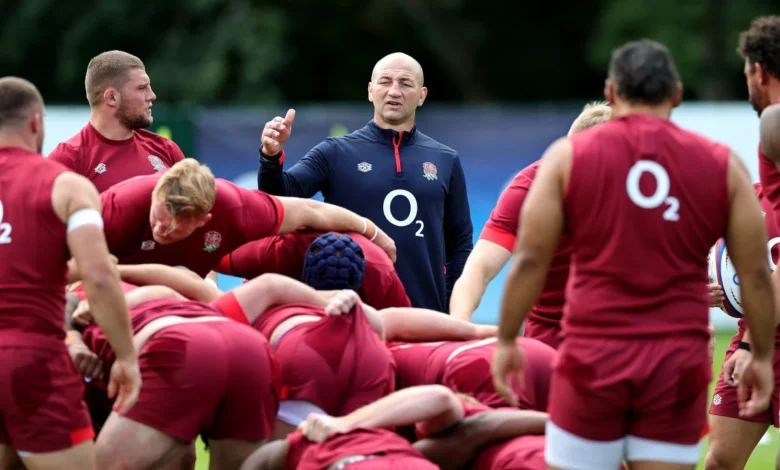The Heartbeat of English Rugby: Unveiling National League 1’s Passion, Power, and Purpose

National League 1 represents the fiercely competitive third tier of England’s rugby union pyramid, where ambition collides with grassroots authenticity. Operating just below the RFU Championship, this league blends emerging talent, seasoned professionals, and historic clubs in a 26-round battle for a single promotion spot—a structure that intensifies every match. Amid rising governance controversies and financial pressures, National League 1 remains a critical incubator for future England internationals while serving as the lifeblood of local communities. With recent structural reforms, including playoff introductions and relegation reprieves, the league balances tradition with evolution, offering a uniquely uncompromising brand of rugby that commands loyalty from die-hard fans nationwide 126.
Competition Format: Meritocracy Under Pressure
14 Teams, 26 Rounds, Zero Margin for Error
The league’s 14 clubs face each other home and away across a grueling season (September–April), where victory earns 4 points, a draw 2 points, and narrow defeats (≤7 points) or high-try performances (≥4 tries) grant bonus points. The champion secures automatic promotion to the RFU Championship, while typically three clubs face relegation to regional National 2 divisions (East, North, or West). However, the 2025 season saw restructuring: the Championship’s expansion to 14 teams spared the 12th-placed side (Leicester Lions) from relegation, exposing how external decisions amplify the league’s volatility. This format demands consistency, with tiebreakers prioritizing wins, then points difference, and finally head-to-head records—ensuring every minute matters 25.
The Contenders: Clubs Defining the 2025–26 Season
Geography, Ambition, and Survival
The 2025–26 campaign features a blend of resilient incumbents and ambitious newcomers, geographically spanning England:
| Team | Home Ground | Capacity | Region | 2024–25 Finish |
|---|---|---|---|---|
| Birmingham Moseley | Billesley Common | 5,000 | West Midlands | 7th |
| Leeds Tykes | The Sycamores | 1,500 | Yorkshire | Nat 2 N Champions |
| Richmond | Athletic Ground | 4,500 | London | Champions (2025) |
| Clifton | Station Road | 2,500 | Bristol | Nat 2 W Champions |
| Tonbridge Juddians | The Slade | 1,500 | Kent | Nat 2 E Champions |
Richmond enters as defending champion, having dominated 2024–25 with a record fourth title. Newly promoted clubs—Leeds Tykes (National 2 North), Clifton (National 2 West), and Tonbridge Juddians (National 2 East)—bring fresh regional rivalries, while perennially competitive sides like Rams and Plymouth Albion aim to challenge Richmond’s supremacy. At the other extreme, teams like Sale FC and Sedgley Park face relentless pressure to avoid the drop, magnified by the league’s financial precarity 125.
Historical Context: From Courage Leagues to Playoffs
A Tier in Constant Flux
Founded in 1987 as Courage National Division Three, this tier has undergone five major rebrands, reflecting rugby’s shifting landscape. Initially a 12-team division, it ballooned to 16 teams by 2009 before streamlining to 14 in 2022–23 to reduce fixture congestion. Promotion pathways have also evolved: the 2025–26 season introduces a playoff (“Access Final”) between National 1 runners-up and Championship sides, offering a secondary route to advancement—a response to club demands for greater opportunity. Historic clubs like Plymouth Albion (the only founding member still in the tier) embody the league’s endurance, while record four-time champions Richmond exemplify its competitive ceiling 1211.
Governance & Financial Turmoil: A League at a Crossroads
Open Revolt Against RFU Leadership
In December 2024, all 12 National 1 clubs united to sign an open letter condemning the Rugby Football Union’s (RFU) “major failures in governance and leadership.” This unprecedented move followed revelations of CEO Bill Sweeney’s £1.1M earnings (including £358K bonuses) amid £40M RFU losses and 40 staff redundancies. Clubs criticized the RFU Council’s “lack of accountability” and demanded an independent review of rugby’s management in England. This friction exacerbates existing challenges: travel costs for nationwide fixtures strain budgets, and minimal TV revenue forces reliance on gate receipts (2024–25 average attendance: 694 per match). With stakeholders questioning the RFU’s strategy for lower tiers, National 1’s sustainability hinges on structural reform 1611.
Beyond the Pitch: Community Impact and Player Development
Grassroots Legacy and Talent Pipeline
National 1 clubs are embedded in their communities, operating academies, women’s teams, and youth programs that foster local talent. For instance, Sale FC provides a pathway for Sale Sharks prospects like fly-half George Pearson, who credited National 1 game time with Leicester Lions for his England U20s selection. The league also partners with iconic institutions like the Barbarians, giving players from tiers 3–4 the honor of wearing the black-and-white jersey in exhibition matches. This community role extends to international outreach; Esher’s alliance with Portuguese club GDS Cascais exemplifies how clubs build global relationships, enriching player experiences beyond league play 1511.
Key Figures and Records
-
Top Try Scorer (2024–25): Sedgley Park’s Rhys Henderson (20 tries)
-
Top Point Scorer: Rotherham Titans’ Richard Hayes (297 points)
-
Highest Attendance: 2,410 (Plymouth Albion vs. Rosslyn Park, March 2025)
-
Most Titles: Richmond (4)
FAQ: Demystifying National League 1
Q1: How does National League 1 differ from the Premiership?
Beyond being two tiers lower, it operates without full-time professionalism. Players often balance rugby with careers, and budgets are a fraction of Premiership clubs’. The focus shifts from global stars to local development 15.
Q2: Why is promotion so limited?
With only one automatic spot (and a new playoff), upward mobility is fiercely contested. The RFU argues this maintains quality in the Championship, but clubs demand more opportunities amid restructuring 12.
Q3: What sparked the governance crisis?
RFU executive bonuses during financial losses triggered outrage. National 1 clubs joined Championship and grassroots teams in calling for leadership changes, citing neglect of lower-tier needs 6.
Q4: How do clubs survive financially?
Through ticket sales, local sponsorships, and volunteer support. Most operate at break-even, making relegation a potential financial disaster 56.
Q5: Who are notable alumni?
England stars like Cadan Murley (Harlequins) honed skills at Richmond, underscoring the league’s development role 15.
Conclusion: The Unyielding Spirit of Rugby’s Engine Room
National League 1 embodies rugby’s deepest contradictions: it is both a proving ground for future stars and a battleground for survival; a tradition-steeped competition straining against modern economic realities. Its clubs, from historic Plymouth Albion to ambitious Leeds Tykes, sustain rugby’s heartbeat in communities where matchdays are cultural pillars. As governance battles rage, the league’s essence endures—unscripted drama, raw passion, and a relentless pursuit of progress. For players and fans alike, National League 1 isn’t just a competition; it’s where rugby’s soul is forged, one brutal tackle, one bonus point, and one promotion dream at a time 1611.



